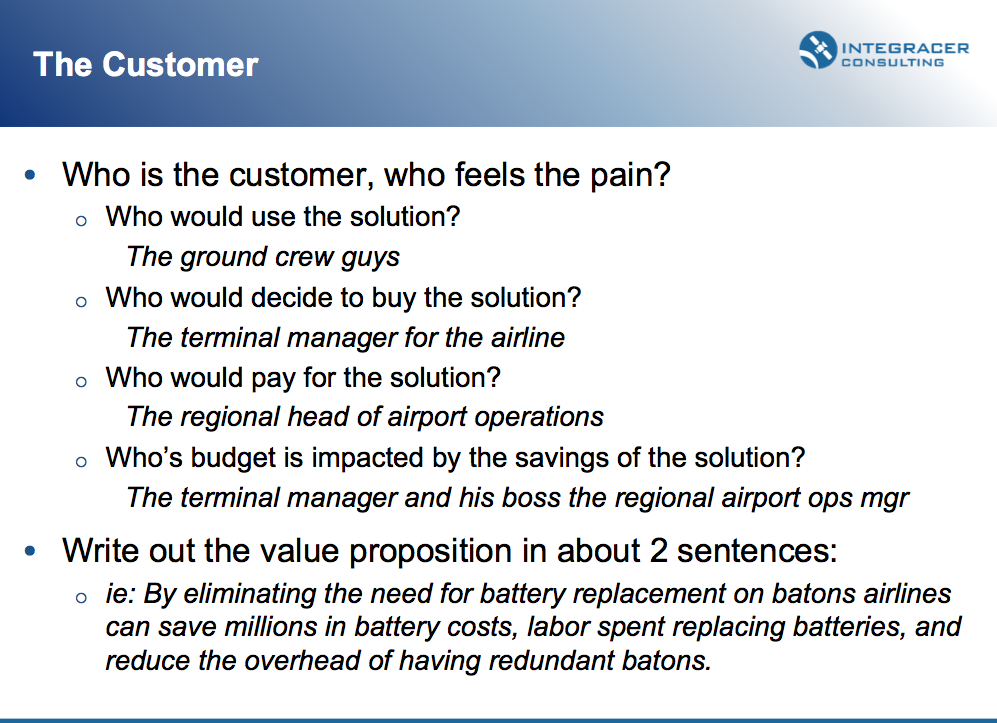 You have now identified some promising problems you feel your venture can address. The next focus is now on refining the problem with additional research and by talking to potential customers.
You have now identified some promising problems you feel your venture can address. The next focus is now on refining the problem with additional research and by talking to potential customers.
The first step should be to do a lot of Googling. Look for white papers, articles in trade publications, check company annual reports. You want to see if there are others offering solutions to this problem. You want to get a sense for the scale or cost of the problem. You want to learn the jargon. I am always amazed how many trade publications are out there and how great a resource they can be. The best part is that many are free! You can find a list of publications by industry here.
The online and trade research should help you find some players in the space and LinkedIn can be another great resource to track down contacts. Next you want to do some surveys of potential customers. If you have properly limited your problems to an industry you have some connection to, this should be easier than if it is a random field you’ve never considered. If you are focused on a B2B opportunity, you probably need to talk to between 10 and 30 customers to get a decent feel for the opportunity.[1] Note that your customer can be broken down into different users, payers, and deciders. There are also influencers who may be allies or hindrance to your sales process. [2] You want to seek out people of all these groups to gain a full picture of your market.
Some of the survey questions I suggest asking are:
- Tell me about your role/job?
- It is my understanding that ___ can be a real problem for you. Is that accurate? Can you tell me more?
- How much time in a given week do you spend on this problem?
- Do others spend a lot of time on it?
- Does your organization spend a lot of money on it? Do you know how much?
- Who in your organization is responsible for that budget?
- What do you think might be a solution to this problem? How would you like it solved?
- How much do you think you would pay for a solution?
- How do your direct reports and your management view the problem?
- How easy is it for you to implement a changes in your organization?
- How are decisions made in your organization? Who approves purchases?
What have you learned about your customer?
With the surveys and interviews completed you should have a good sense for who your customer is, how they might use your solution, and how they value it. At this stage you should be able to populate a 1-pager or slide about your customer such as this:

At this point you understand your problem and customer much more deeply. Now you are ready to come up with your killer solution, product, or service.
CONTINUE TO TALK TO THE CUSTOMER
LISTEN TO FEEDBACK
PRE SELL
[1] If you are doing a consumer opportunity, you should consider tools like Survey Monkey to get your questions in front of hundreds or thousands of consumers. You can target a Google Adwords advertisement linking to a survey. Offer a chance to win an iPad (and actually award one) for some cheap market research.
[2] When thinking about the various roles of “customers” and how they are involved in the purchase decision, I like to use the prescription drug example. The user of the drug is you, the patient. The decider is your doctor who has to prescribe the treatment. You the patient and perhaps family members influence the doctor to decide to give the drug as you likely asked them about it after seeing their Super Bowl ad. The payer is your insurance company. All have a role in the sales process and so you need to understand their roles. For more on this, see my Sales Primer.